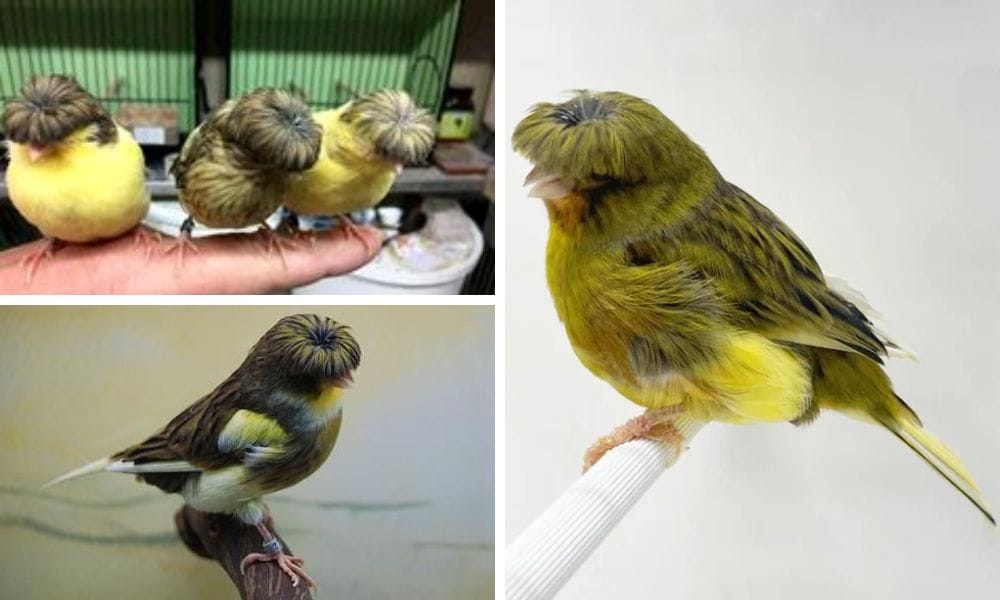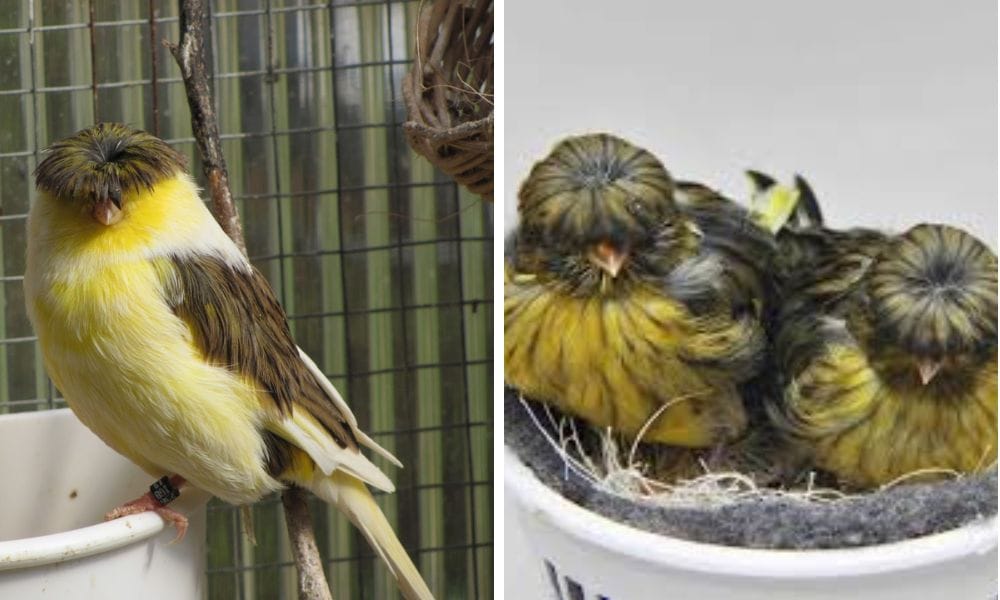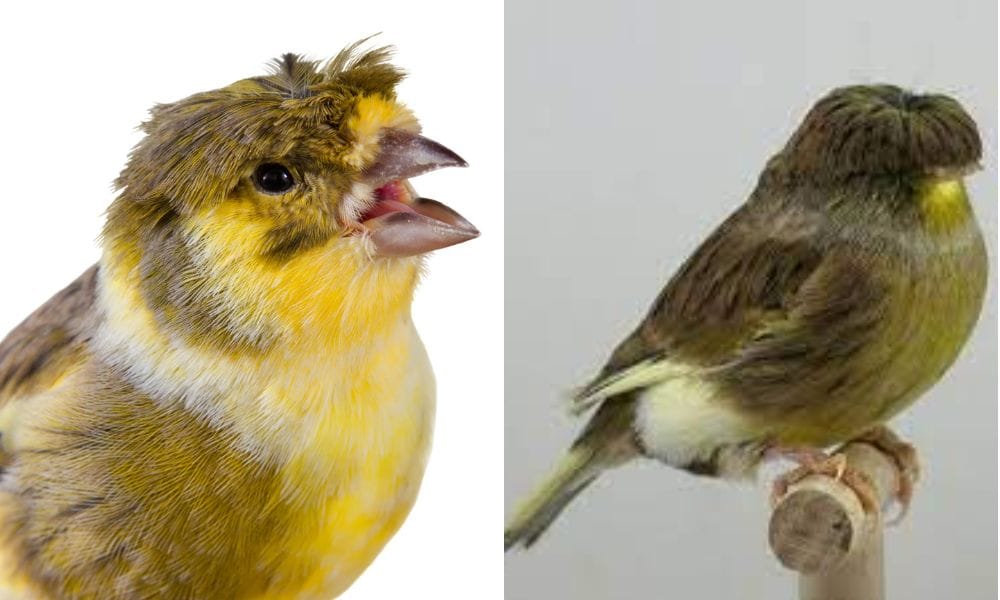The Belgian Canary: A Chirpy Tale of Feathers and Song!
Ever wonder what it would be like to unlock the hidden secrets of one of nature's most curious creatures? It is the beloved Belgian Canary!

Key Takeaways:
- The Belgian Canary is a historic and popular bird variety known for its distinctive shape and song.
- Understanding the care, feeding, and breeding of Belgian Canaries is essential for enthusiasts and breeders.
- Bird shows and canary shows play a significant role in the preservation and popularity of the Belgian Canary.
The Origins of the Belgian Canary
The Belgian Canary, or Serinus canaria domestica, is not just a bird; it’s a piece of living history. The bird originated from the Dutch Canary in the 18th century, and the Belgian Canary, also known as the Belgian Fancy Canary, has been a primary influence on other breeds of domestic canaries. Its slender neck, small head, and elegant posture make it one of the most important breeds in the canary world. The historic development of this bird is closely tied to the regions of Belgium and the Netherlands, where fanciers first bred them for their unique characteristics.
The Belgian Canary's Historic Development
The journey of the Belgian Canary through time is fascinating. It has played a pivotal role among the Old Continental breeds, significantly influencing the development of other admired canary breeds and holding a notable place in aviculture. From its early days in Europe, particularly in Belgium, the Netherlands, and France, the breed has undergone significant changes. The first World War and other historical events had a profound impact on the survival and spread of the Belgian Canary. Despite these challenges, the breed has remained one of the most popular canary varieties, cherished by bird enthusiasts around the world.
A Distinctive Appearance
When it comes to the Belgian Canary’s appearance, this little bird's unique qualities and appealing nature are highlighted by two features: its slender neck and small head. These physical attributes, along with a posture that resembles a “7” shape when viewed from the side, make the Belgian Fancy Canary one of the most distinctive canary breeds. The average length of these birds is a testament to the careful breeding practices that have been refined over centuries.
The Palette of Colours and Feathers
Belgian Canaries come in a variety of colours, from the classic yellow to green and even frilled varieties. In contrast, the lizard canary is known for its unique feather patterns, particularly the black crescent shapes that resemble a reptile's scaly coat. The feathers of these birds are not just a matter of beauty but also a result of meticulous selection by breeders. The colours and feather patterns are often showcased in bird shows, where the Belgian Canary’s beauty is celebrated.
The Lovely Singing of the Belgian Canary
One of the most captivating aspects of the Belgian Canary is its lovely singing. These birds are not just visually appealing; their melodious tunes are a delight to the ears. The males, in particular, are known for their vocal performances, which can be a deciding factor in canary shows. The song of the Belgian Canary is a product of both nature and nurture, with breeders often selecting for this trait.
Caring for Your Belgian Canary: Tips and Tricks
Belgian canaries, like all domestic canaries, require a nurturing environment to thrive. When it comes to their care, these melodious creatures are somewhat high strung and need a calm atmosphere. A spacious cage is essential, as it allows them to flutter and perch comfortably, reducing stress and promoting health. The cage should be placed in a well-lit area, but not directly in sunlight or drafts. It’s important to include perches of varying diameters to exercise their feet and prevent arthritis. Additionally, these birds are free breeders, meaning they tend to nest and breed easily if provided with the right conditions, including a nesting box and proper nesting materials.

The diet of Belgium canaries should be rich and varied to ensure they receive all the necessary nutrients. A mix of canary seed, fresh fruits, and vegetables should be a staple. Supplementing their diet with vitamins and minerals is also beneficial, especially during the breeding season or molting. Fresh water must be available at all times, and it's crucial to maintain cleanliness in their cages to prevent diseases. Remember, a well-cared-for Belgian canary is more likely to reward you with its cheerful song and vibrant presence in your home. The Belgian Canary as a Free Breeder The Belgian Canary, known for its vibrant personality and melodious tunes, has also gained a reputation as a free breeder. This term refers to the bird's ability to reproduce without the intense interventions that some other captive birds require. In the world of aviculture, this trait is highly prized as it indicates robustness and adaptability. Belgian Canaries, with their natural inclination to breed, can often be left to their own devices, provided they are in a stress-free environment with a suitable mate. This ease of breeding makes them a favorite among both novice and experienced bird enthusiasts.
Moreover, the Belgian Canary’s status as a free breeder has implications for its care. Owners need to provide a comfortable habitat with ample space, nesting materials, and a balanced diet to support the health of both the parents and the chicks. The simplicity of their breeding process does not negate the importance of monitoring for any signs of distress or illness. By ensuring these conditions are met, the Belgian Canary thrives, continuing its lineage with little human interference, which is a testament to its resilience and the careful selective breeding practices that have shaped this most important breed.
The Belgian Canary: The Most Important Breed in Aviculture The Belgian Canary holds a prestigious position in the avian community, often hailed as the most important breed in the history of bird keeping. This accolade is not just due to its enchanting song or its dynamic plumage but also because of its significant impact on the practices and standards of breeding canaries as a whole. The breed has been a cornerstone in the development of various canary breeds, with its genetics contributing to the diversity and vitality seen in canaries today. Its influence extends beyond its own lineage, setting a benchmark for what is desirable in avian breeding.
The importance of the Belgian Canary is also reflected in its cultural impact. It has been a muse for artists, a companion for the lonely, and a symbol of nature’s beauty and complexity. The breed’s long-standing popularity has encouraged responsible breeding practices and heightened awareness of avian health and welfare. As enthusiasts continue to cherish and nurture this breed, the Belgian Canary remains not just a feathered friend but a pivotal species that embodies the progress and passion of the aviculture world.
The Evolution of Canary Breeds: From Wild to Tamed through Selective Breeding
The oldest canary breeds, such as the Flemish, Norwich, and Lancashire, have a rich history that dates back to the eighteenth century. These breeds, along with the Belgian canary, have been shaped by humans over generations. The old Dutch canary and the Scotch fancy canary are prime examples of how selective breeding has led to a variety of type canaries, each with unique characteristics. The old Dutch canary, known for its round body and lively nature, and the Scotch fancy canary, recognized by its long, sleek body and elegant tail, are both descendants of these early breeding efforts.

The journey from wild to domesticated canaries is a testament to the close relationship between humans and these charming birds. In England, the Yorkshire, Gibber Italicus, and Lancashire canaries became some of the most important breeds, each with distinct features that made them highly sought after. The Yorkshire canary, for instance, is known for its long, slender body and upright posture, a stark contrast to the Gibber Italicus with its unique bent neck. These type canaries not only reflect the aesthetic preferences of their breeders but also their dedication to nurturing and preserving the canary’s enchanting song and vibrant spirit.
Feeding the Melodious Bird
What canaries eat is crucial to their health and well-being. Belgian Canaries, classified within the finch family, require a balanced diet that includes seeds, fruits, vegetables, and occasionally, protein sources. Proper feeding ensures that these birds maintain their vibrant feathers and high energy levels, which are especially important for those that are bred for shows. You can find more about Canary Food in our blog below.

Breeding the Belgian Canary
Breeding Belgian Canaries is both an art and a science. Unlike Gloster Canaries, which were developed in Staffordshire during the 1980s through crossbreeding with red factor birds to create small-crested varieties, Belgian Canaries require meticulous attention to lineage, health, and characteristics to produce offspring that meet the standards of the breed. The breeding process involves selecting the right pairs, providing suitable nesting conditions, and ensuring the well-being of both the female and the eggs.
The Role of Bird Shows in Promoting Continental Breeds
Bird shows and canary shows are not just events for enthusiasts to gather; they play a crucial role in the preservation and improvement of the Belgian Canary breed. These shows provide a platform for breeders to showcase their birds, exchange knowledge, and keep the standards of the breed high. The recognition and awards given at these shows also serve as motivation for breeders to continue their efforts.
The Belgian Canary in the Modern World
In today’s animal world, the Belgian Canary still holds a special place. While captive-bred Belgian Canaries are bred for shows and do not face the same dangers, wild birds are subject to natural predators and environmental challenges. Despite the competition from other popular bird species, the Belgian Canary remains a favorite among bird fanciers. Its historic charm, coupled with its delightful song and appearance, ensures that this breed continues to thrive in the hearts of those who appreciate the beauty of birds.
Conservation and the Future
The conservation of the Belgian Canary is of utmost importance. While not currently at risk of extinction, the breed's future depends on the continued interest and dedication of breeders and fanciers. Efforts to maintain genetic diversity and prevent inbreeding are essential to keep the Belgian Canary flourishing for generations to come.
Summary
The Belgian Canary, with its rich history and captivating features, is more than just a pet; it's a legacy. From its slender neck and small head to its melodious song, this breed has charmed its way into the hearts of bird lovers worldwide. The dedication of breeders and the significance of bird shows in promoting the breed's standards are pivotal to the Belgian Canary's continued popularity. As we look to the future, it's clear that the Belgian Canary will remain a cherished member of the avian community.
FAQ Section
Q: What is the average length of a Belgian Canary? A: The average length of a Belgian Canary is typically around 6.5 inches (16.5 cm), but this can vary slightly depending on the specific bird and breeding practices.
Q: How important is diet in the care of Belgian Canaries? A: Diet is extremely important for Belgian Canaries, as it directly impacts their health, feather quality, and singing ability. A balanced diet consisting of seeds, fruits, vegetables, and occasional protein is essential.
Q: Are Belgian Canaries at risk of extinction? A: Currently, Belgian Canaries are not at risk of extinction. However, it is crucial for breeders and fanciers to continue their efforts in conservation and breeding to ensure the breed's longevity and genetic diversity.

